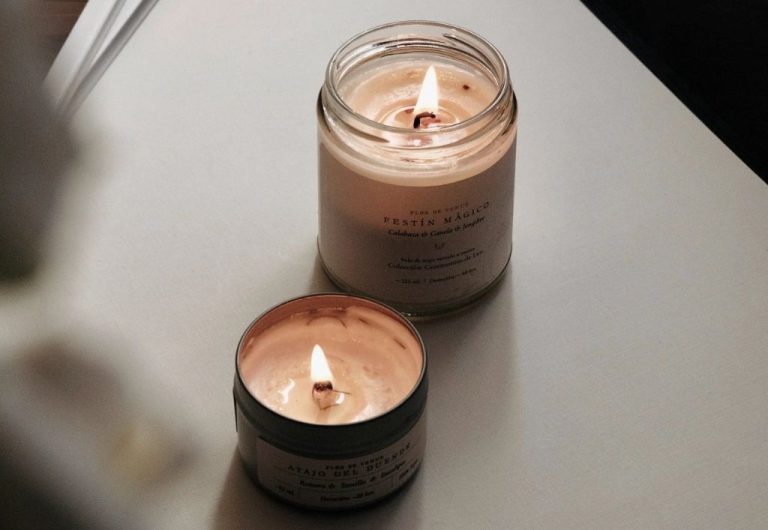Why Is My Woodwick Candle Not Staying Lit?
What are WoodWick Candles?
WoodWick candles are a popular scented candle brand known for their patented wooden wicks that crackle while burning. The wooden wicks are made from natural wood grains that have been pressed into wick fibers. When the wick burns, the wood grains pop and crackle, creating a pleasant, fireplace-like sound.
The wooden wick also promotes more even and complete burning. As the wick reaches the wood grains, the flames rise higher and fuller to envelop the wooden pops and cracks. This results in a cleaner, longer burn with less soot and more fragrance throw.
WoodWick candles come in a variety of styles, shapes, scents, and sizes. Some of their most popular candle lines include the Classic scented candles, Scented Jar candles, Layered candles, and Luxury candles. WoodWick also offers reed diffusers, car jars, wax melts for warmers, and other home fragrance products featuring their signature wooden wicks.
Common Reasons a WoodWick Candle Won’t Stay Lit
One of the most common reasons a WoodWick candle won’t stay lit is because the wick is not trimmed and centered properly. WoodWick candles have a unique crackling wooden wick that needs to be trimmed to an optimal height of 1/4 inch for the best performance. If the wick is too short, too long, or trimmed unevenly on the sides, it can disrupt the capillary action that brings wax up the wick to fuel the flame.
When trimming the wick, make sure to trim it straight across to leave the wick perfectly level. Trim just above the shiny metal tab portion of the wick, removing any excess blackened or curved wick. The remaining wick should be centered in the wax pool. An uneven wick prevents the fueling of the flame and causes tunneling in the wax pool, which is why centering the wick properly is crucial.
Always use a proper wick trimmer and trim the wick before each lighting for a bright, even flame. An improperly trimmed wick is the number one reason a WoodWick won’t stay lit. Taking care to trim the special wooden wick to the ideal 1/4 inch height before every burn will help ensure your candle stays lit and burns evenly down to the bottom.
Wick Trimming
One of the most common reasons a WoodWick candle won’t stay lit is the wick needs to be trimmed before lighting. The wick on a new WoodWick candle can be quite tall and will need to be trimmed to 1⁄4 inch before lighting for the first time. This ensures the wick does not produce excessive smoke or too large of flame when burning.
Here are some tips for properly trimming the wick:
- Use the wick trimmers that come with WoodWick candles or a pair of sharp scissors.
- Trim the wick to 1⁄4 inch before lighting for the first time and each time before relighting.
- Make sure to trim straight across to leave the wick flat at the top.
- Avoid leaving behind any stray wick fibers that could impede the burn.
- Trim only the black portion of the wick.
Trimming the wick to the proper height is essential for allowing the candle to burn evenly and remain lit. Taking this simple step before lighting can prevent issues with the wick being too long and causing the flame to be too high, smoke, tunnel, or go out repeatedly.
Candle Placement
One of the most common reasons a WoodWick candle may not stay lit is its placement in the home. For optimal performance, avoid putting WoodWick candles in drafty areas or near air vents. The breeze from drafts or vents can blow out the flame or prevent the wax from melting properly.
Instead, place the candle on a stable, level surface away from household drafts. Many people find that WoodWick candles burn best on mantles, shelves, side tables, and other protected furniture surfaces. Just make sure to keep the candle away from anything flammable like curtains or wall hangings.
Additionally, avoid placing WoodWick candles in direct sunlight, as this can overheat the wax. A cool, still indoor location works best. With proper placement in a draft-free spot, you’ll find the candle burns stronger and stays lit during use.
Candle Care & Maintenance
Proper candle care and maintenance is key to ensuring your WoodWick candle stays lit and burns evenly. One of the most common issues that can cause a WoodWick candle to struggle staying lit is allowing the wax pool to become too deep.
As a candle burns, a pool of liquid wax forms around the wick. This wax pool should be a quarter to half an inch deep for optimal performance. If the wax pool exceeds this depth, the wick can become drowned in wax, making it difficult for the flame to receive oxygen and stay lit.
You can fix an overly deep wax pool by allowing the candle to solidify completely before relighting. Trim the wick to 1⁄4 inch length. This will allow for a proper melt pool depth when you go to light the candle again. Make sure to extinguish the candle before the wax pool exceeds 1/2 inch deep.
Another issue that can cause poor wick performance is sooting. This black residue can build up on the wick if the candle isn’t burned long enough. The soot essentially “chokes” the wick, inhibiting its ability to draw wax and stay lit.
To reduce sooting, make sure to burn your candle for at least one hour each time you light it. You can also use candle trimmers to snip and remove any black sooty bits from the wick as needed. This will allow the wick to burn cleanly and efficiently.
Proper Burn Time
One of the most common reasons a WoodWick candle won’t stay lit is burning the candle for too long during each lighting. WoodWick candles are designed to be burned in intervals, with each lighting lasting 1-2 hours. Exceeding the recommended burn time can cause the wax pool to become too deep and the wick to drown.
When the melted wax pool reaches the very edge of the container, it’s time to extinguish the flame. This allows the wax to completely solidify again before the next lighting. Burning a WoodWick candle continuously for more than 4 hours at a time can pose safety risks in addition to causing wick drowning. The wax can overheat, ignite, or explode if left burning for too long unattended.
To avoid wick drowning and other potential hazards, strictly adhere to the 1-2 hour maximum burn time per lighting. Extinguish the flame before the wax pool exceeds one inch deep or reaches the container’s edge. Allow the candle to cool completely between uses. Following these precautions will help ensure your WoodWick candle burns evenly and stays lit during each proper short interval lighting.
Troubleshooting Flame Issues
Some common issues with WoodWick candle flames include flickering, smoking, and tunneling. Here’s how to diagnose and troubleshoot these problems:
Flickering
If your WoodWick candle flame is flickering, there are a few likely causes:
- The wick is too long – trim the wick to 1⁄4 inch length.
- The candle wax pool is too shallow – make sure you are allowing the wax pool to melt all the way across the top before extinguishing.
- There is draftiness near the candle – move away from vents, windows, doors, and fans.
Smoking
A smoking WoodWick candle indicates the wick is too long. Simply trim the wick down to 1⁄4 inch length. This will allow the wick to burn cleaner without producing excess smoke.
Tunneling
If the melted wax pool has edges that dip down, this is called tunneling. It’s caused when the flame burns down the center of the candle but does not melt the wax fully to the edges. To fix, blow out the candle and let the wax resolidify. Next time, allow the candle to achieve a full melt pool before extinguishing.
When to Trim the Wick
Trimming your WoodWick candle’s wick is essential for optimal performance and to prevent issues like tunneling. But how often should you trim the wick? Here are some signs it’s time to trim your WoodWick candle’s wick again:
The flame is too high or producing smoke: If the wick is too long, the flame will be larger than normal and may smoke or produce excess soot. This is a sign the wick needs to be trimmed back down to maintain a lower, steady flame.
The wax is tunneling: Tunneling occurs when the wax melts unevenly, creating a hole or tunnel in the top layer. This is often caused by a wick that is too long, creating a hot flame that melts the center wax faster than the outer wax.
The wick is turning black: Normal use will cause wick tips to turn black, but if a large portion of the wick is blackening, it likely needs to be trimmed back. The blackened section should be removed to allow the wick to burn clean again.
Flame seems low or struggles to stay lit: If the wick is too short, the flame will be smaller and weaker. A short wick may struggle to stay lit as it isn’t drawing up wax efficiently. Trimming the wick can help strengthen the flame.
Wax pool is very small: An over-trimmed wick won’t melt enough wax to form a full pool. This incomplete melt pool is a sign more wick is needed to melt wax evenly across the top.
Proper Wick Care
One of the most important aspects of candle care is properly maintaining the wick. The wick is essential for even and complete burning of the candle wax. When a candle is lit, the wax around the wick will melt and be absorbed into the wick, fueling the flame. This causes the wick to bend and curl over with each burn.
It is crucial that you trim the wick and center it within the melted wax pool after each use. Allow the wax to completely solidify before trimming and straightening the wick. Use wick trimmers or small sharp scissors to trim the wick to 1⁄4” length. Trim it straight across and remove any curled or charred portions. Gently straighten and center the wick, being careful not to puncture the wax.
This helps ensure even burning, prevents smoking, tunnels, mushroom tops, and other irregularities. Centering the freshly trimmed wick after each use will help the candle burn properly through its entire life. Properly maintaining the wick is key for optimal candle performance.
When to Retire a Candle
Knowing when to properly dispose of a WoodWick candle is important for safety and performance. Here are some signs it’s time to retire your candle:
Soot Buildup: Over time, soot can accumulate on the sides and top of the candle glass. Excess soot is a safety hazard and also affects the candle’s scent throw and appearance.
Weak Scent: As the wax pool gets shallower, the candle’s scent will get weaker and fragrance oils can burn off. If you notice weak or no scent while burning, it may be time to retire the candle.
Small Wax Pool: If the remaining wax pool only melts down to 1/2 inch or less while burning, it’s time to dispose of the candle properly. A smaller wax pool can lead to tunneling issues and uneven wax melting and burning.
Wax Discoloration: If the wax has significantly discolored from the original shade, the fragrance oils may be depleted. Dark or murky wax also indicates it’s time to retire the candle.
Wick Issues: If the wick is drowning, mushrooming excessively or you experience recurrent issues keeping the candle lit, retiring the candle is recommended.


